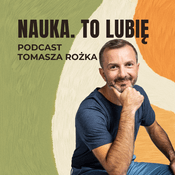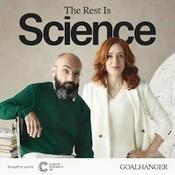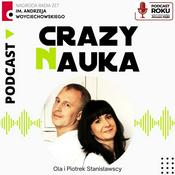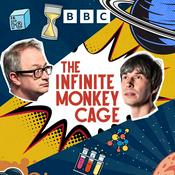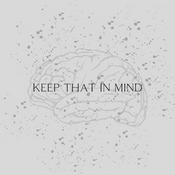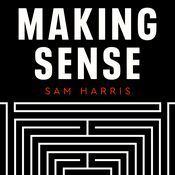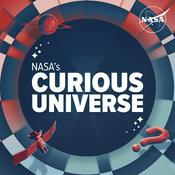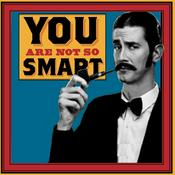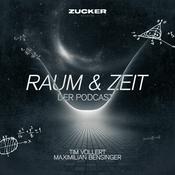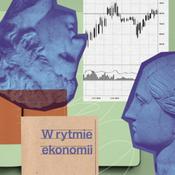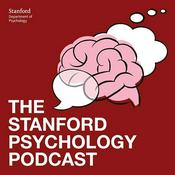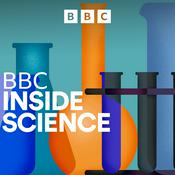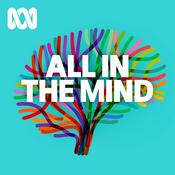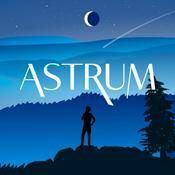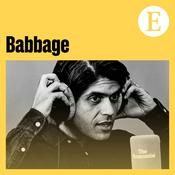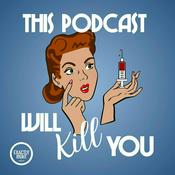86 odcinków

THE QUEST FOR CONSCIOUSNESS - Christof Koch PhD #84
01.12.2025 | 1 godz. 34 min.
What are the best competing theories of consciousness? Can we isolate where it arises and measure how complex it is? How do 5meo DMT mystical or non-separation experiences shift worldviews on consciousness?In this episode we have the very theme of the podcast’s title to delve into, the quest to understand the nature of consciousness. So we discuss mind and self, and what kind of substrate you need to allow for subjective experience; we look at the various philosophical positions on the nature of consciousness and ways to move beyond the unwinnable argument around the hard problem; we talk about extended cognition and cellular cognition; how integrated information theory attempts to quantify consciousness; the origin of meaning; psychedelics and the implications of mystical experiences of non-separation; whether AI will ever become conscious; and the implications of plant intelligence and memory.There’s only one person who can speak about such a wide range of topics this well, one of the most passionate consciousness researchers in the world for over 40 years, physicist and neuroscientist, Christof Koch. He’s Chief Scientist at the BlueDot Foundation, and has authored and co-authored over 1000 scientific papers and 6 books, including “The Quest for Consciousness”, “Confessions of a Romantic Reductionst” and “Then I am myself the World”, which we’ll be focussing on today. What we discuss:00:00 His migration from physics to neuroscience.06:10 “Take no one’s word for it”.07:50 His long-term Francis Crick collaboration.10:00 The signatures, footprints and correlates of consciousness.17:50 The empirical approach to the philosophical ‘Hard problem’.21:00 Metaphysics isn’t empirical.21:40 The issues along the spectrum from materialism to idealism.29:00 “The great divide of being” - quotidian vs dissociated states.33:15 Is the self an illusion?34:15 The difference between self consciousness and subjective experience.38:00 “Confessions of a romantic reductionist”.41:00 Meaning is not an empirical subject.44:30 Integrated information theory explained - existence as casual power.52:50 The placebo effect is consciousness causally influencing the world.01:00:00 Computational theories of consciousness.01:03:10 The connectome: an exact brain replica in a simulation.01:05:10 Extended cognition & the blurred boundaries between selves.01:09:30 Michael Levin: the hierarchy from cellular to collective cognition.01:13:50 ‘Then I am myself the world’ Book.01:14:40 5meoDMT: His mystical & NDE experiences.01:21:40 Lowering of the DMN in non-self like experiences like flow, meditation, day-dreaming, or psychedelics.01:24:00 To be real, experiences must have causal power.01:27:25 Perspective shift after psychedelics.01:30:50 Plant consciousness, intelligence, communication & memory.References: www.christofkoch.comScientific PapersChristof Koch, “Then I Am Myself the World: What Consciousness Is and How to Expand It the world”.Christof Koch, “Consciousness: Confessions of a romantic reductionist.”

HIGH-DOSE INTRAVENOUS VITAMIN C TRIALS - Dr. Richard Z. Cheng PhD #83
15.11.2025 | 1 godz. 21 min.
Do the many clinical trials into high-dose vitamin C prove it can actually treat the common cold and cancer, rather than just boost the immune system? Why is there ongoing scepticism? Why are multifactorial chronic diseases so hard to study in clinical trials? What is the right dosage to get the best results from vitamin C?In this episode we have the often misunderstood topic of Vitamin C as an antioxidant to get clear on, particular the high-dose approach and particularly delivered intravenously. Despite a very clear consensus that Vitamin C is a great booster to immune function, research that shows that it helps fight the common cold or flu have been dismissed by doctors and medical researchers; as well as claims that higher doses can increase its efficacy. Other claims that Vitamin C can help fight cardio-vascular disease and even cancer have been with even greater scepticism. So what exactly can vitamin C do to assist our immune function to fight disease, and why is there so much confusion about the answer given the high quantity of clinical trials data?Fortunately today’s guest has exactly the right skill set and research knowledge to separate the science from the here-say, medical doctor and orthomolecular medicine researcher, Dr. Richard Z Cheng. Dr. Cheng has a PhD in biochemistry and molecular biology; he’s served as a doctor in the US military; he has consulted for the National Cancer Institute, and presented at the National Institute of Health (NIH); he has conducted clinical trials; He is the editor in Chief of the Orthmolecular Medicine New Service; He is also a fellow of the American Academy of Anti- Aging medicine; and has run anti-aging and regenerative medicine clinics in both China and the US for over 20 years.What we discuss:00:00 Intro05:15 Most animals produce Vitamin C in the body, but not primates.06:00 Oxidation & Redox: Giving or receiving an electron.11:00 After reducing oxidation the body recycles it back into vitamin C.14:00 Teamwork: sharing electrons between nutrients and vitamins.18:20 Conventional consensus: good for prevention but not treatment.21:00 Over 80K papers on Vit C on Pub Med!21:30 Linus Pauling Intravenous Vitamin C for cancer and heart disease.27:00 Shortening of common cold and lowering of symptoms - Harri Hemila.29:00 Low dose studies dilute the data on the efficacy of the high dose studies.31:00 Intravenous treatment allows much higher doses safely.33:00 Differences in absorption between IV and oral application.35:20 Pro-oxidant effect only possible at IV high dose.36:30 IV clinical trials.39:20 Cytokine storm cascades in acute respiratory distress.44:00 High Dose IV Vitamin C saved lives in China during Covid 19.50:00 Attacks following Richard’s NIH presentation on Vitamin C during covid.57:00 Cardio vascular disease - Vit. C research history.01:01:00 Collagen Synthesis for vascular walls & Vitamin C deficiency.01:07:20 Is the taboo for life style medicine lifting?01:09:30 Issues of gold standard RCT trials not working for multifactorial integrative interventions.01:16:00 Recommendations for preventative use of Vitamin C for listeners. References:E Cameron & Linus Pauling - 'Supplemental ascorbate in the supportive treatment of cancer: Prolongation of survival times in terminal human cancer', 1976E.T. Creagan, 'Failure of high-dose vitamin C (ascorbic acid) therapy to benefit patients with advanced cancer', 1979Harri Hemilä - over 200 meta-analyses and clinical trialsPing Chen et al. 'Pharmacokinetic Evaluation of Intravenous Vitamin C'Richard Z Cheng, ‘Can early and high intravenous dose of vitamin C prevent and treat coronavirus disease 2019 (COVID-19)?’KU Cancer Center researchers announce study of high-dose intravenous vitamin C to treat muscle-invasive bladder cancer, 2024National Cancer Institute overview of IV Vitamin C cancer research.

WILL AI ROBOTS BE SENTIENT & THE QUANTUM FOUNDATIONS OF CONSCIOUSNESS - Suzanne Gildert PhD #82
01.11.2025 | 1 godz. 32 min.
Will artificial intelligence robots have subjective experience? What are the ethical and safety implications of such entities? Which quantum physics theory can accommodate consciousness?In this episode we have the extraordinary possibility of subjective experience and feelings in artificial intelligence robotic systems to think about. So we look at experiments to try and prove if it’s even possible; the quantum building blocks from which both living and artificial systems are made up; the ethical and safety implications of advanced intelligence instantiated in robots, and we get into the controversial search for a quantum physics theory that can accommodate consciousness.Fortunately, my guest today is not only one of the first pioneering scientists to really devote themselves to the creation of sentient human-similar robot minds and bodies, but is also an experimental physicist working with quantum computing systems. She is of course the quantum engineer, consciousness researcher and AI computer scientist Suzanne Gildert. She has written over 80 scientific papers, founded several successful AI companies and has dozens of US patents for her inventions. What we discuss:00:00 Intro.04:25 Her move to AI & robotics from quantum computing.06:45 Something missing from materialism.11:00 The what, how and why of consciousness.12:20 Remembering quantum fields are the base level of reality.15:50 Quantum Biology - John Joe McFadden.18:20 ‘Protecting’ quantum coherence environments.20:00 The Penrose-Hameroff microtubules quantum consciousness theory.24:40 The risks of the “two mysteries” argument.30:10 Looking for subjective experience in AI robots.33:55 “Reward function”, purpose led, agential behaviour doesn’t emerge naturally in AI.36:25 Limitations to building sentient AI robots.39:25 Iain McGilchrist’s left-right hemisphere interpretation of split brain data.41:40 How similar are AI minds to human ones?43:40 Will Ai become conscious one day?44:40 The generalisation problem.47:50 The anthropomorphism problem.50:05 Ethical implications - Regulations, rights and protections.53:20 Survival instinct research in AI.57:20 Brain activity mapping to subjective experience, AI decoder research.50:20 Biological robots: Different emergent possibilities?01:01:50 Cellular material re-purposing itself spontaneously.01:04:10 Could the biosphere be a technology?01:07:40 Quantum Conscious Agency Theory.01:14:05 Quantum Annealing. 01:21:03 Can you test for panpsychism?01:25:10 Buddhism: the dissociated agent approach.References:www.SuzanneGildert.comQuantum Conscious Agent theory presentation - Suzanne Gildert.Jeff Hawkins, Sandra Blakeslee, “On Intelligence“.John Joe Mcfadden, CC Quantum Biology episodeRoger Penrose, Orch OR (Orchestrated objective reduction) theory.Erwin Shrodinger, “What is Life?”.‘In Tests, Open AI’s New Model Lied and Schemed to Avoid Being Shut Down’ article‘Brain activity decoder can reveal stories in people’s minds’ articleJerry Tang et al. ‘Semantic reconstruction of continuous language from non-invasive brain recordings’ paperTristan Harris & Aza Raskin, “The AI Dilemma” presentation, March 2023

EXERCISE INTERVENTIONS FOR MENTAL HEALTH - Dr. Brendon Stubbs #81
14.10.2025 | 1 godz. 7 min.
Is there evidence that even light exercise can improve mental health and help treat severe mental illness? How easy is it to prove the effects? Are our ever more sedentary lifestyles putting us at risk? How easy is it to apply in the current mental health treatment system?In this episode we have the revealing research on the use of exercise and movement to treat mental health to get up to date on. This is the third episode out of three in this series on the theme of life-style medicine, the other two being on Sleep for mental health (Episode #72 with Roxanne Prichard) and on diet for mental health (Episode #70 with Felice Jacka), so please check those out as all 3 interrelate in term of mental health outcomes. In this episode though we get into the reasons why even a little movement has a radical effect on our mental health; that movement can be used in association with talky and drug therapies to effectively treat even serious mental health disturbances like schizophrenia; we also get into the huge host of improvements across the board when exercise is applied; the impressive bulk of clinical trials that have proved this in the last 15 years; and we hear about the faster than usual uptake of this data by international policy makers, and the difficulties of practically integrating these protocols into the mental health care system.Now fortunately for us, our guest today is one of the world’s leading researchers in this field, mental health physiotherapist and Kings College London researcher, Brendon Stubbs. He is the co-author of over 800 highly cited scientific papers, and the book “Exercise-Based Interventions for Mental Illness: Physical Activity as Part of Clinical Treatment”. What we discuss:00:00 Intro06:40 Early attempts on the mental illness ward as a physio.09:28 The rise of life-style research into mental health in the early 2000s.12:00 Sedentary lifestyle issues.13:24 The benefits of being both therapist & researcher.15:50 Resistance to the word ‘exercise’.19:00 Rise in sedentary lifestyle correlates with rise in mental health issues and stress.23:45 Higher inflammation in sedentary populations.26:30 Endorphins are not the only reason it feels good.30:15 15% drop in depression risk.33:10 Muscle, heart and lung strength is a marker for lower depression risk.35:30 Even genetic predispositions to depression can be 25% less at risk.36:30 Equally successful to CBT therapy.38:30 Hippocampus size variations with just 10 mins of light movement.41:45 Sleep, diet & movement increase hippocampus size & reduce inflammation.42:30 Schizophrenia & Psychosis studies.46:00 Difficulty with continuity of exercise when patients return to society.49:15 The body likes routine & reduced friction.50:00 Limitations of randomised control trials on life style interventions.54:15 The faster than usual integration of this into the consensus. 56:30 Policy creation at national and world health level.58:00 Pharmaceutical funded researchers pushing back against these results. 59:00 Difficulty applying this for family doctors and mental health professionals.01:01:15 Socio-economic mental health risk and difficulty of access.01:03:00 The national health money saving motivation is hard to prove.01:05:00 Main tips for movement for mental health. References:‘Physical Activity and Incident Depression: A Meta-Analysis’ paper, Felipe Shuch et al. ‘Strength training has antidepressant effects’ paper, Fabricio Rossi et al.‘Physical activity offsets genetic risk for incident depression’ paper, Karmel Choi et al.‘Exercise and internet-based cognitive–behavioural therapy for depression’ paper, Mats Hallgren et al.‘Light-exercise-induced dopaminergic and noradrenergic stimulation in the dorsal hippocampus’ paper, T. Hiragana et al.The Lancet Psychiatry Commission: a blueprint for protecting physical health in people with mental illness

ON FACING DEATH, according to C.G.Jung - Monika Wikman PhD
30.09.2025 | 1 godz. 24 min.
How should we support the dying, and how should we approach death itself? What is conscious dying? What does Carl Jung’s work say about facing death?In this episode we have the complex topic of how to face Death, through the lens of psycho analyst Carl Jung. I’m sure that some of you will have found this episode because you’re facing death during this time, either your own or of a loved one; and to those of you I offer my condolences and healing prayers, and hope dearly that what we discuss today will offer some perspective and assistance, and my apologies in advance if any of our ideas cause you pain: death and mourning are extremely personal topics. But I also hope that many others of you are here simply to try and form a healthier relationship with death.The inspiration for this episode came not only from my own experience facing my own parent’s mortality, but also from my intuition that our modern, consumeristic, aestheic and individualistic society has made us more afraid of death than ever; perhaps because of our modern societies focus on material well-being, and the power of technology to guarantee it. My gut feeling is that we need to become aware of this unconscious taboo, as it seems to be hindering a deeper and perhaps more wholesome acceptance of mortality in general. And that’s why I wanted to speak to a specialist like my guest psychoanalyst Monika Wikman. Monika received her PhD in clinical psychology from the California School of Professional Psychology and then qualified as a Jungian psychoanalyst at the Jung-Von Franz Center for Depth psychology in Zurich. She is an expert on topics including archetypal phenomena surrounding death, dreams, active imagination and alchemy. Her work with the dying culminated in a research project called ‘Dreams of the Dying’ at UC San Diego Medical Center. She is also the author of the book, “Pregnant Darknesss: Alchemy and the rebirth of consciousness”. What we discuss:00:00 Intro.04:30 How to support the dying.07:05 Death informs us.09:00 Facing our own mortality - the history of Conscious dying.13:18 The Osiris Myth. Dismemberment and rememberment.16:45 Death is the ultimate goal, an achievement, according to Jung.19:15 Death duellers.21:45 The last step of individuation.24:45 Symbolic death, according to Jung.30:00 ‘The wound is where the light enters you’. Rumi33:00 The religious function - Jung. 34:00 Monika’s 2nd NDE - a relationship with the darkness.44: 00 Life after death and the subtle body.46:00 Prayer and connecting with the eternal.50:00 Only through limitation can we connect with the eternal.51:00 The subtle body - uniting psyche and matter.56:10 The Divine wedding - the marriage between opposites.57:45 Synchronicities around the dying. 01:07:00 Studying the dreams of the dying.01:11:30 Dead friends and family often come for them in dreams.01:15:20 Common motifs of crossing rivers, thresholds and initiations.01:17:00 How we mourn.01:29:20 If you didn’t serve someone well you’ll regret it after they die.01:22:00 Grief transforms.References: Monika Wikman, “Pregnant Darkness - Alchemy and the rebirth of consciousness”Wendell Berry poem - RisingMircea Eliade, “Yoga: immortality & Freedom”Chiron, the wounded healer.C.G.Jung, “Memories Dreams and Reflections”.Ram Dass quote, ‘Dying is absolutely safe’Leonard Cohen quote, 'We are so lightly here'. (Not William Blake).
Więcej Nauka podcastów
Trendy w podcaście Nauka
O Chasing Consciousness
Słuchaj Chasing Consciousness, Nauka To Lubię i wielu innych podcastów z całego świata dzięki aplikacji radio.pl
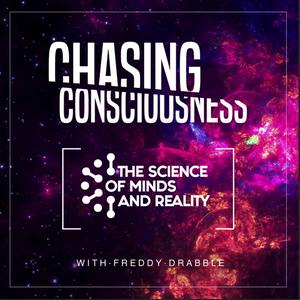
Uzyskaj bezpłatną aplikację radio.pl
- Stacje i podcasty do zakładek
- Strumieniuj przez Wi-Fi lub Bluetooth
- Obsługuje Carplay & Android Auto
- Jeszcze więcej funkcjonalności
Uzyskaj bezpłatną aplikację radio.pl
- Stacje i podcasty do zakładek
- Strumieniuj przez Wi-Fi lub Bluetooth
- Obsługuje Carplay & Android Auto
- Jeszcze więcej funkcjonalności


Chasing Consciousness
pobierz aplikację,
zacznij słuchać.
